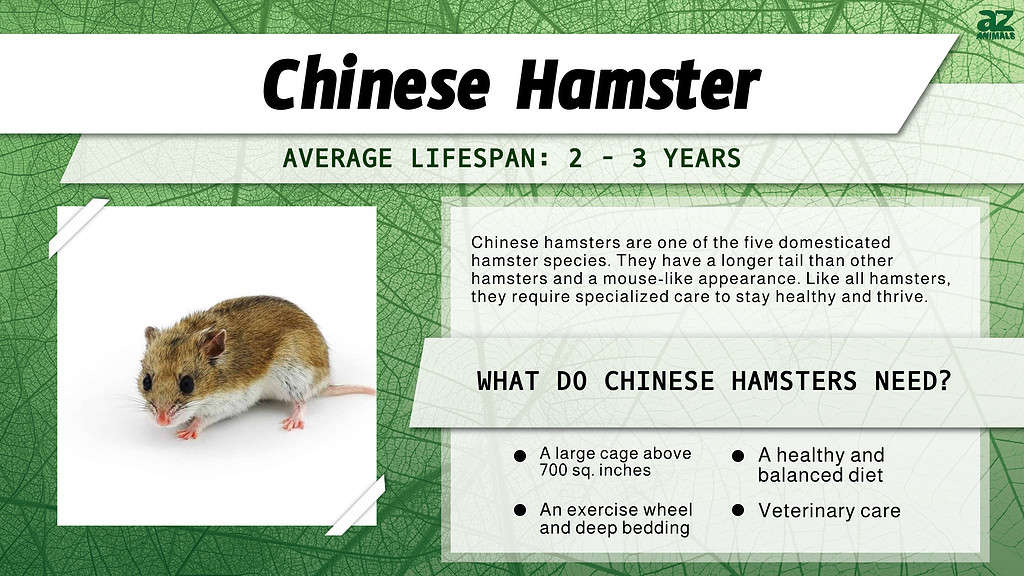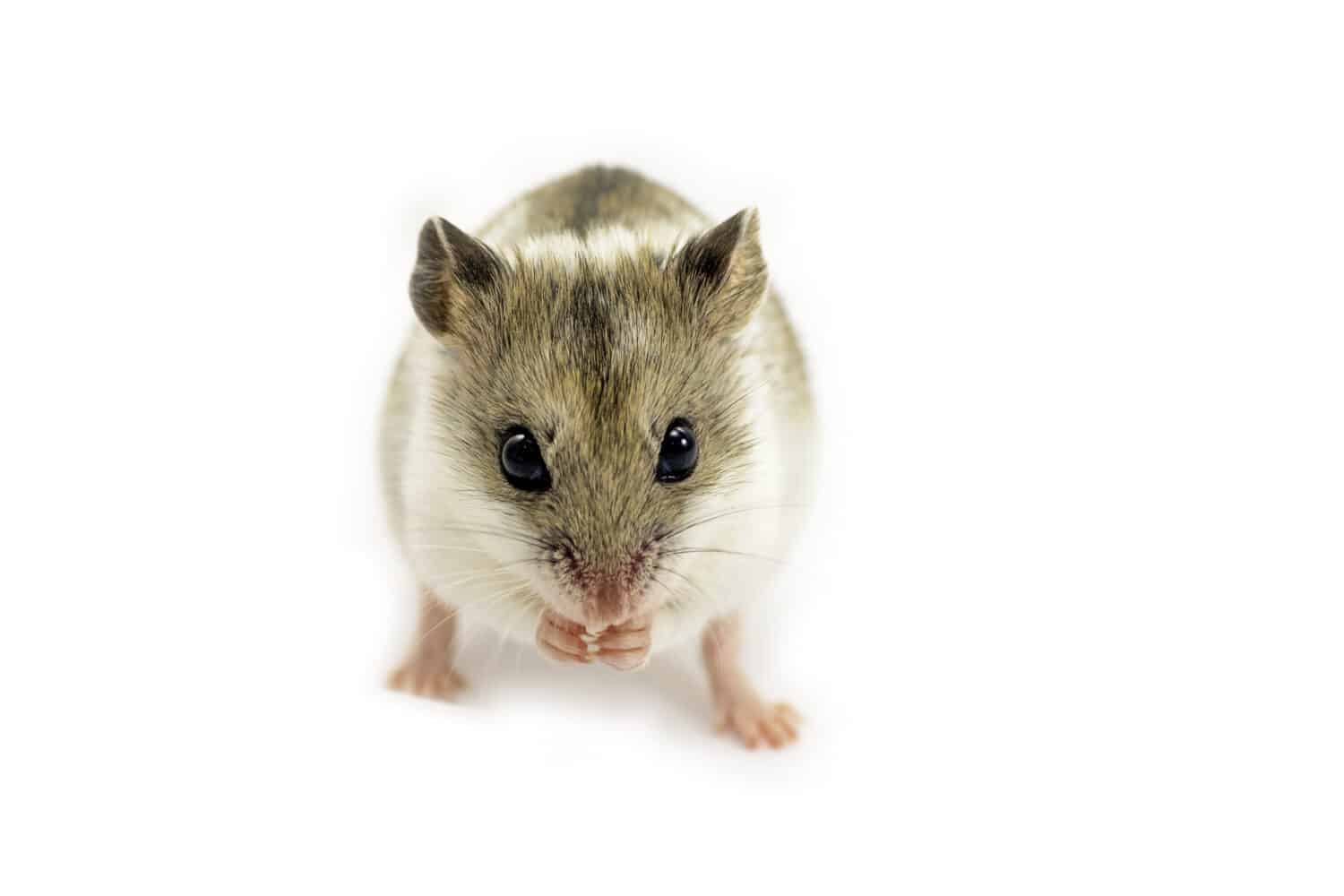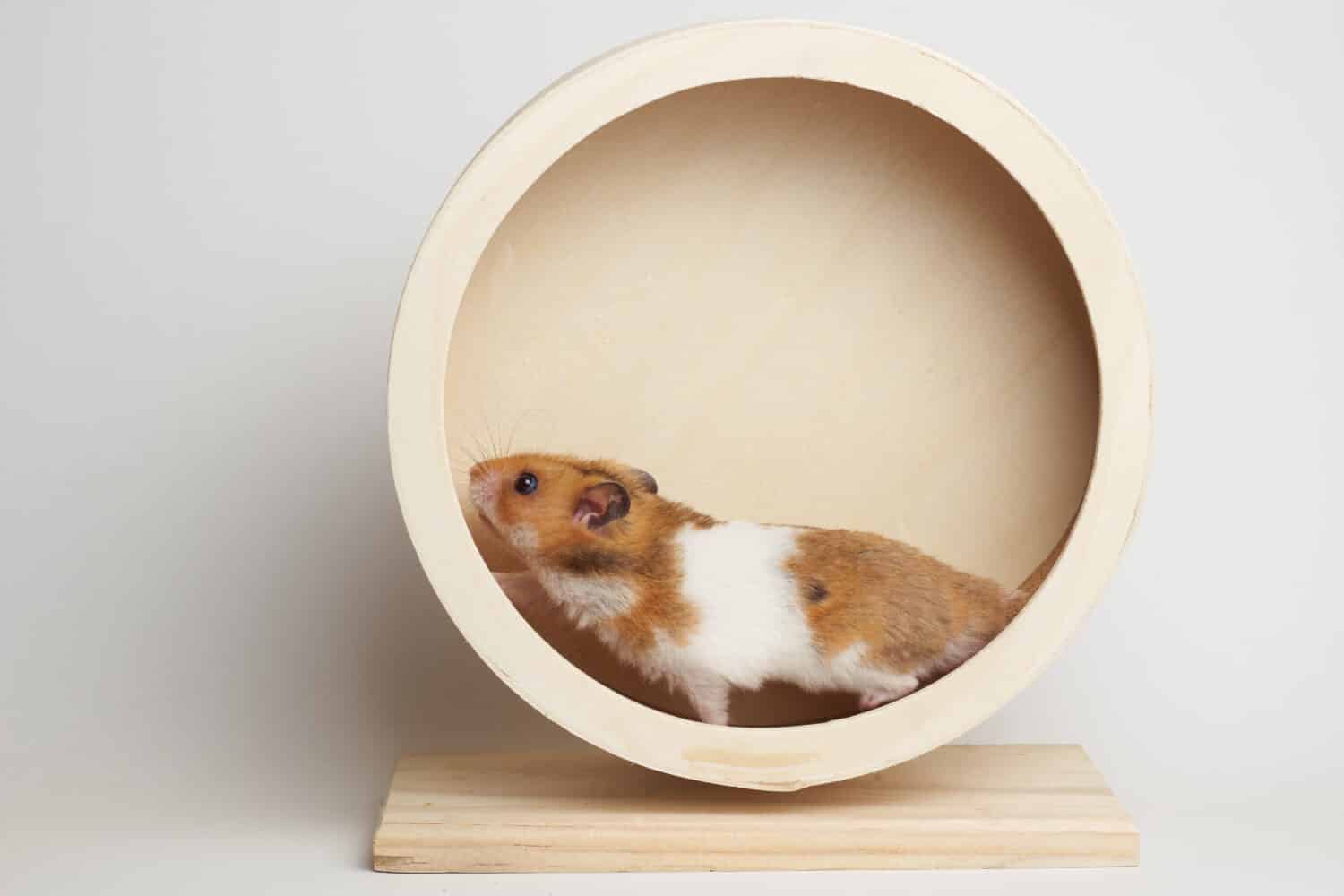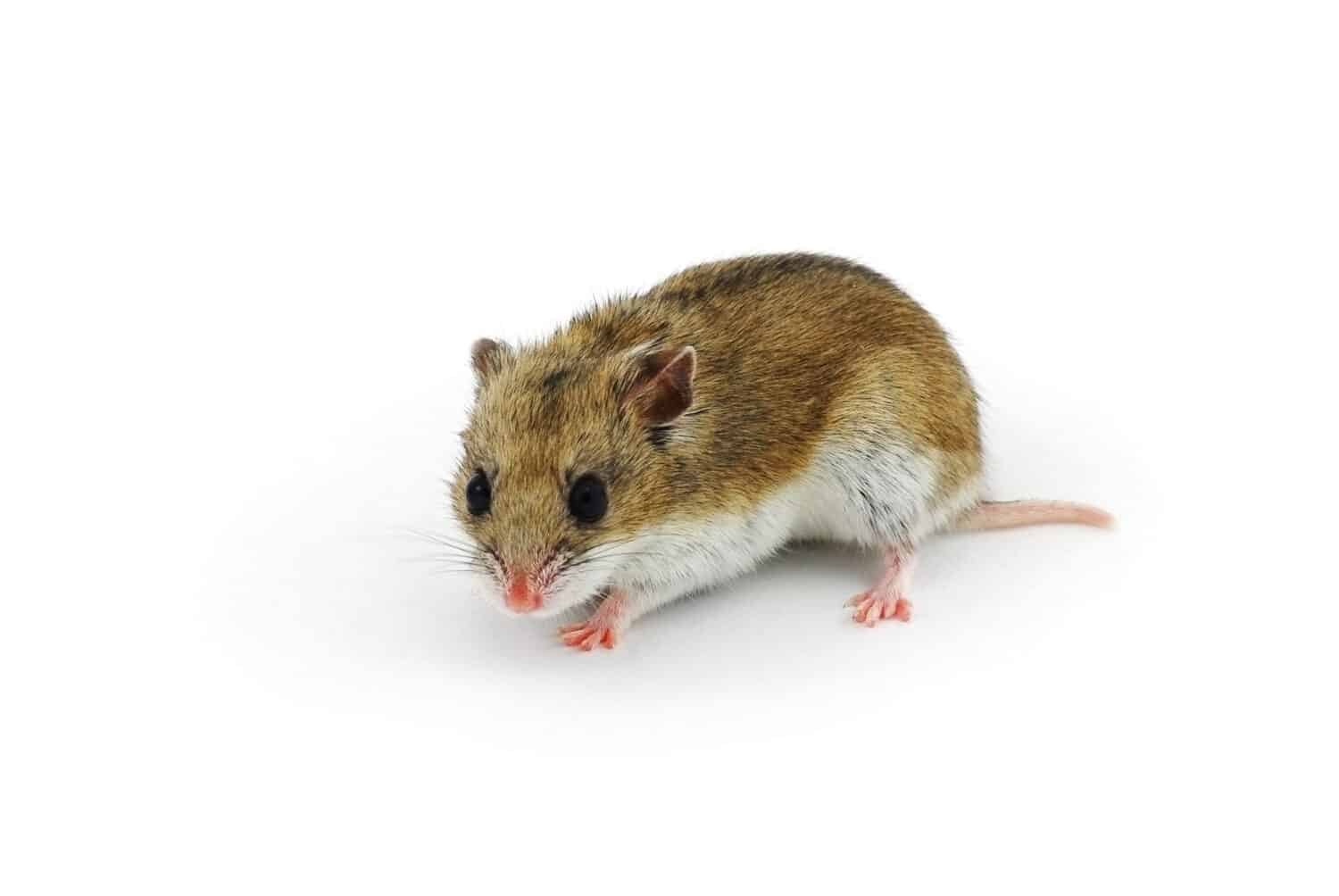Chinese hamsters are one of the five species of domesticated hamsters. They are unique and low-maintenance pets with special care needs. The Chinese hamster stands out from the other species with a sleek appearance and a slightly longer tail than normal.
Chinese hamsters are considered a rare species of domesticated hamster, and they are much more uncommon than Syrians and dwarf hamsters. They are small rodents that are native to the North China Plain and Mongolia. Owning and caring for a Chinese hamster is a lot of responsibility, especially if you want to keep them happy and healthy.
There is a lot of misinformation out there on the Chinese hamster care needs. However, we will be providing you with updated information and proper ways you can care for these hamsters in captivity.
Lifespan and Care Requirements: Understanding the Lifespan and Essential Care Needs of Chinese Hamsters

Chinese hamsters are relatively easy to care for. Their care is similar to other hamsters, specifically dwarf hamsters. Although Chinese hamsters are not true dwarf hamsters, they are still smaller than Syrian hamsters and slightly larger than Roborovski hamsters. They grow to around 4 to 5 inches in size and weigh 1 to 1.5 oz.
The Chinese hamster has an average lifespan of 2 to 3 years, which is standard for most species of hamster.
It is easy to distinguish Chinese hamsters from other hamsters because they have longer tails. Their tail is usually half to one inch longer and visible even when covered with fur. Chinese hamsters are not found in many different colors, with brown wild-type colors being popular. However, you can find Chinese hamsters with white spotting or brown stripes with white coloration. Black is the standard eye color for Chinese hamsters, and it is rare to find them with ruby eyes.
When it comes to caring for Chinese hamsters, you want to ensure that you can meet their care requirements. Chinese hamsters require a spacious cage, a deep layer of bedding, chew toys, and a healthy diet. If you are looking to get a Chinese hamster for your child, they are better suited for older children who can look after them properly. Younger children may have difficulty caring for and handling Chinese hamsters on their own.
Pet Care Essentials: Providing The Right Enclosure, Bedding, Diet, and Enrichment for Chinese Hamsters
Enclosure
Minimum cage size: 39 (L) × 19 (W) × 24 (H) inches
Chinese hamsters need a very large cage, similar in size to dwarf hamster cages. You ideally want to provide Chinese hamsters with at least 700 to 740 sq. inches of continuous floor space, which is recommended by PetMD’s veterinarian. This means that the majority of pet store cages are too small for Chinese hamsters. Pet stores typically sell small wire cages for hamsters to live in and deem them as “safe”’. Unfortunately, they are an outdated form of housing that hamster experts have realized is unsuitable and cruel for any species of hamster.

Chinese hamsters benefit from a very large cage.
©David Pegzlz/Shutterstock.com
When choosing a suitable cage for your Chinese hamster, you need to consider its size, depth, ventilation, and security.
Chinese hamsters are very active and require a spacious cage to explore and fit all their supplies inside. Depth is important to consider because the base of the cage should be able to fit a deep layer of substrate inside for burrowing. The cage should have ventilation on the sides of the top part of the cage. Furthermore, the cage should be secure enough to prevent your Chinese hamster from escaping.
Fortunately, there are various suitable cages for Chinese hamsters available. They include:
- Large storage bin cages with mesh lids
- Repurposed guinea pig or rabbit cages
- Fish tanks
- Custom-made hamster cages
- Reptile enclosures
- Already available large hamster cages
Bedding/Substrate
The Chinese hamster loves to burrow, so they need a deep layer of safe bedding in the cage. You ideally want to create a 6-to-8-inch layer of bedding for them to burrow in. Your Chinese hamsters bedding should be absorbent, low dust, and non-toxic. There are several different safe and unsafe bedding options for hamsters. The best bedding for Chinese hamsters would be any unscented paper-based bedding. Aspen shavings, soft hay and grasses, hemp, and coco peat are other safe bedding alternatives.
You want to avoid dangerous beddings such as pine (even kiln-dried) and cedar shavings, sawdust, scented, medicated, and straw. They can be harmful to Chinese hamsters and pine and have toxic properties.
Diet
Chinese hamsters are omnivores so they should be eating both plant and animal-based ingredients in their diet. Their staple diet should consist of hamster pellets and seed mixes. Variety is important for hamsters since they are natural foragers. Chinese hamsters can also be fed fresh veggies and fruits like carrots, bananas, apples, and cucumbers. However, they should not make up more than 5% of your hamster’s total diet.
When choosing an appropriate seed and pellet mix, look for one that has between 16% to 21% protein, 8% to 12% fiber, and no more than 7% fat. Chinese hamsters should always have access to food because they have a fast metabolism.
Enrichment
Chinese hamsters can become bored if they don’t have enough enrichment in their cage. The best enrichment for Chinese hamsters would be an exercise wheel, deep bedding, sand baths, and chew toys. An exercise wheel is especially important for Chinese hamsters and should have a smooth surface for running. You want to avoid barred or mesh wheels and ensure that the wheel is larger than 10 inches. Barred and mesh wheels can injure them or cause bumble foot, a painful condition that requires medical treatment. Since hamsters’ teeth continuously grow throughout their lives, they need safe wooden toys to chew on.

Chinese hamsters need a wheel to run on during the night. It should have a flat surface and not bars or mesh.
©Johannes Menge/Shutterstock.com
Furthermore, Chinese hamsters should never be bathed in water. Bathing your hamster in water removes their natural oils and their damp fur could cause severe respiratory problems. Instead, they need sand to bathe in and keep their fur clean. The sand should be unscented and sterilized for them, and not dirt from outdoors.
Cost Considerations: Exploring The Initial and Ongoing Expenses of Owning a Chinese Hamster
Owning a Chinese hamster can be expensive at first since their appropriate cages, bedding, and enrichment can be pricey. The initial cost of owning a Chinese hamster can range between $300 to $550. This will go towards your Chinese hamster’s cage, wheels, bedding, food, and enrichment supplies.
Once the initial purchases have been made, the ongoing costs are relatively low. You will only need to purchase more food, bedding, and toys for your Chinese hamster. Keep in mind that you might need to mix a couple of different hamster foods together to create a balanced mix. This means that you will be spending money on various hamster foods.
Another cost to consider is a Chinese hamster’s veterinary care. Chinese hamsters need to be taken to a veterinarian when they are injured or sick. Both the checkups and treatments can be expensive, so you will need to keep money aside for when you need to take them to an exotic veterinarian. Some treatments and tests that might need to be done can cost hundreds if not thousands of dollars.

Hamsters need to be taken to a veterinarian for medical treatment when necessary.
©Pixel-Shot/Shutterstock.com
The veterinarian may also recommend bringing your Chinese hamster in for regular health checkups, which usually cost between $30 to $90.
Important Facts and Tips: Essential Information on Handling, Socialization, and Health Care for Chinese Hamsters
Handling and Socialization
Chinese hamsters can be quite shy when you first get them. It can take a while for them to get used to being handled, and some Chinese hamsters may never get comfortable with being held.
After your Chinese hamster is allowed to adjust to their new home for a couple of days, you can begin the taming process. Chinese hamsters can be tamed using treats, positive reinforcement, and gentle handling. The taming process can take a few weeks to days, so it is important to be patient with them during that time.
You can start taming your Chinese hamster by offering them healthy treats in the palm of your hand. To avoid getting injured if they were to bite you, you can wear thick cotton gloves to protect yourself. You can also sit with your Chinese hamster in a dry bathtub or secured playpen and let them run around and sniff you.

It can take some time for Chinese hamsters to get used to being handled.
©Allocricetulus/Shutterstock.com
Since hamsters are crepuscular, they will be more active in the evenings and at night. Avoid waking your Chinese hamster up just to be held, since this can be stressful for them. Instead, you want to wait for your Chinese hamster to wake up on their own time before handling them.
Unfortunately, some Chinese hamsters struggle to be tamed even after a couple of months. Hamsters in general are not cuddly pets that like to be held and sleep on your lap. This is one of the reasons that they do not make good pets for small children.
Health Care Tips
Tip 1: Ensure that your Chinese hamster is fed a healthy and balanced diet. They should get most of their daily nutrition from pelleted foods and seed mix. Grains, seeds, nuts, and veggies are good inclusions in their diets as well. They should have fresh water available in their cage at all times.
Tip 2: Make sure that their cage is an appropriate size. Chinese hamsters should not be kept in small cages, which can cause stress-related behaviors like bar chewing and climbing. The cage should meet or exceed the minimum size and be filled with a deep layer of bedding to allow your Chinese hamster to burrow.
Tip 3: Chinese hamsters enjoy running on a wheel, so be sure to include one in their cage. The wheel should be large enough for their backs to be straight as they run, rather than curved. Wheels that are too small can be quite damaging to your Chinese hamster’s spine.
Tip 4: You will need to regularly clean your Chinese hamster’s cage. You can do this by spot-cleaning their cage every one to two days. Remove uneaten food, soiled bedding, and tidy up their cage. Their cage will need to be deep cleaned every one to two months. This is when you will remove most of the bedding and wipe down surfaces that are soiled with urine or poop. You want to avoid replacing large amounts of bedding at once. This is because Chinese hamsters have scent-mark in their enclosure. When all of their scent is removed at once, it can make them feel stressed and overwhelmed.
Tip 5: If you notice that your Chinese hamster is acting abnormally or has visible signs of an injury or illness, they need to be taken to an exotic veterinarian right away.
In Summary
Chinese hamsters can be great pets for those who can provide them with the proper care. They can be slightly expensive to own, especially when you first get all their supplies and cages. It can also take a while for Chinese hamsters to warm up to their owners and tolerate being handled. With proper housing, diet, and enrichment, Chinese hamsters will be active pets that are fun to watch and care for.
The photo featured at the top of this post is © Allocricetulus/Shutterstock.com
Thank you for reading! Have some feedback for us? Contact the AZ Animals editorial team.







